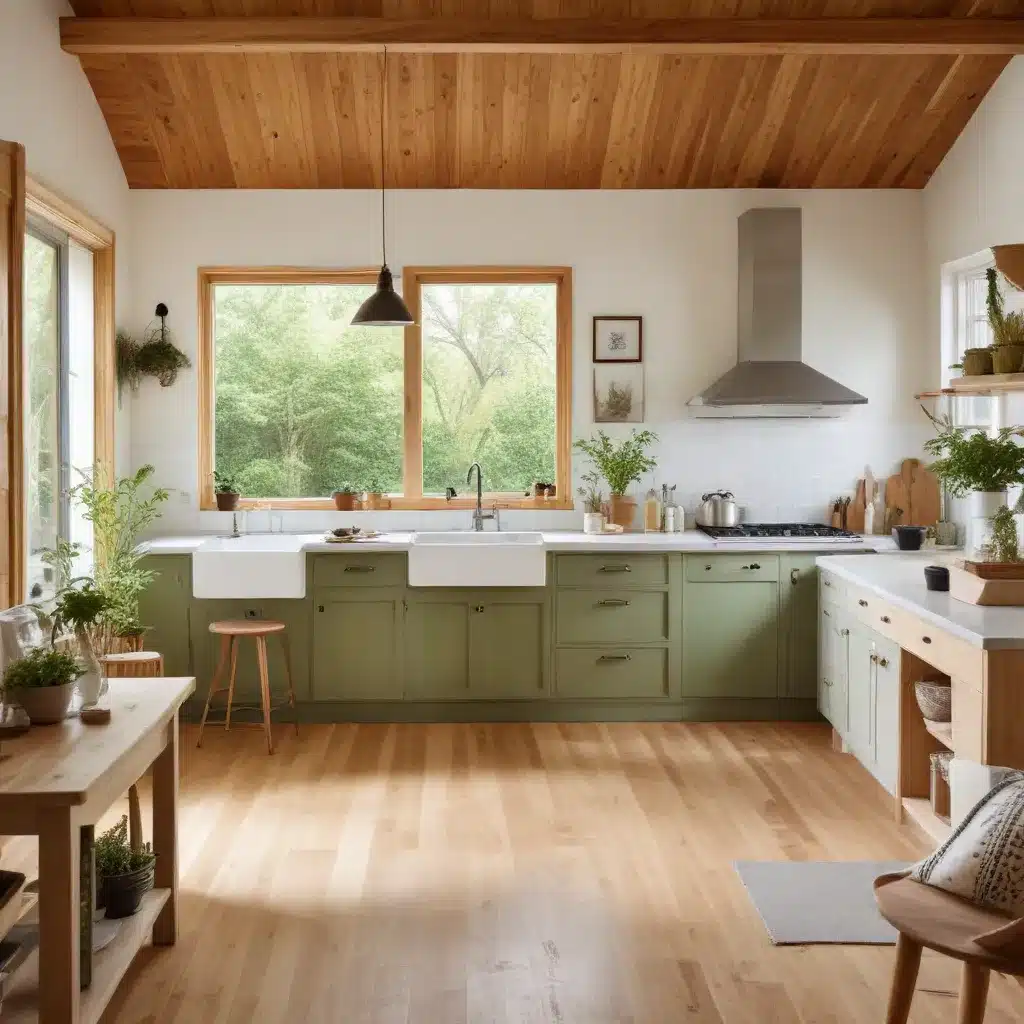Renovating your home can be an exciting project, but it’s also an opportunity to make sustainable choices that reduce your environmental impact. Whether you’re tackling a full kitchen overhaul or simply refreshing a few rooms, there are numerous eco-friendly alternatives to traditional building materials and household products. By incorporating sustainable swaps into your remodel, you can create a greener, healthier living space for your family without breaking the bank.
Sustainable Material Choices
One of the first steps in an eco-friendly remodel is to carefully consider the materials you’ll use throughout your home. From flooring to countertops, there are plenty of renewable, recycled, and non-toxic options that can elevate your design while minimizing your carbon footprint.
Eco-Friendly Flooring Options
When it comes to flooring, look for products that are FSC-certified, meaning they come from responsibly managed forests. Alternatives like bamboo, cork, and reclaimed wood not only have a lower environmental impact than traditional hardwoods, but they can also add unique character to your space. Bamboo, in particular, is a fast-growing grass that can be harvested sustainably. Cork is another renewable resource that’s durable, comfortable underfoot, and naturally resistant to mold and mildew.
Renewable Wall Treatments
For your walls, consider low-VOC paints that emit fewer harmful chemicals into the air. Brands like ECOS Paints and Benjamin Moore’s Natura line offer a wide range of eco-friendly paint options. You can also explore natural plasters, such as lime-based or clay-based finishes, which provide a beautiful, organic look while improving indoor air quality.
Sustainable Countertop Alternatives
When it comes to kitchen countertops, steer clear of traditional solid surfaces made from petroleum-based materials. Instead, look for recycled glass options like Vetrazzo, or paper-based laminates like PaperStone, which are made from post-consumer waste. These sustainable choices not only reduce environmental impact but can also add visual interest and uniqueness to your kitchen.
Energy-Efficient Upgrades
Improving the energy efficiency of your home is another crucial aspect of an eco-friendly remodel. By making smart upgrades to your windows, insulation, and even your appliances, you can significantly reduce your energy consumption and utility bills.
High-Performance Windows and Doors
Investing in energy-efficient windows and doors can make a significant impact on your home’s heating and cooling costs. Look for products with high R-values, which measure a material’s resistance to heat flow. Double-paned or triple-paned windows, as well as those with low-e coatings, can dramatically improve your home’s thermal performance.
Insulation Solutions for Improved Efficiency
Proper insulation is essential for maintaining a comfortable indoor temperature and minimizing energy use. Consider spray foam insulation, which can seal air leaks and provide superior thermal protection, or cellulose insulation, made from recycled newspaper and other plant-based materials.
Renewable Energy Integration
If your budget allows, explore the integration of renewable energy systems, such as solar panels or geothermal heat pumps. These technologies can significantly offset your reliance on traditional, fossil-fuel-powered utilities, reducing your carbon footprint and utility bills in the long run.
Water Conservation Strategies
Water conservation is another important aspect of sustainable home design. By incorporating water-saving fixtures and systems, you can reduce your household’s water consumption and minimize your impact on local water resources.
Low-Flow Plumbing Fixtures
Upgrading to low-flow faucets, showerheads, and toilets can significantly reduce your home’s water usage without sacrificing performance. Many of these fixtures are designed to maintain water pressure while using a fraction of the water compared to traditional models.
Greywater Recycling Systems
Consider installing a greywater recycling system that collects and treats water from sinks, showers, and washing machines for reuse in irrigation or toilet flushing. These systems can dramatically reduce your freshwater consumption and help conserve this precious resource.
Drought-Tolerant Landscaping
When planning your outdoor spaces, choose drought-tolerant, native plants that require minimal watering. This not only reduces your water usage but also helps to preserve local ecosystems and habitats.
Circular Design Principles
Embracing circular design principles, which focus on reducing waste and maximizing the useful life of materials, is another way to make your remodel more sustainable.
Repurposed and Reclaimed Materials
Seek out reclaimed or repurposed materials for your remodel, such as salvaged wood, architectural salvage, or vintage furniture. Not only do these items often have unique character and charm, but they also divert waste from landfills and reduce the need for new resource extraction.
Modular and Adaptable Layouts
Design your home with modular and adaptable layouts that can accommodate changing needs over time. This allows you to easily reconfigure or repurpose spaces without the need for extensive renovations in the future.
Designing for Disassembly
When selecting materials and products, choose those that are designed for disassembly, making it easier to repair, reuse, or recycle them at the end of their useful life. This “cradle-to-cradle” approach helps to minimize waste and maximize the circular flow of resources.
By incorporating these sustainable strategies into your remodel, you can create a greener, more energy-efficient, and healthier home for your family. While some eco-friendly options may require a slightly higher upfront investment, the long-term benefits in terms of reduced utility bills, improved indoor air quality, and a lower environmental impact make them a worthwhile investment.
For more inspiration and guidance on sustainable home remodeling, be sure to visit Reluctant Renovator, a valuable resource for cost-conscious, eco-minded, and family-focused renovators. With the right planning and a little creativity, you can transform your living space into a haven of sustainability and style.




